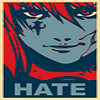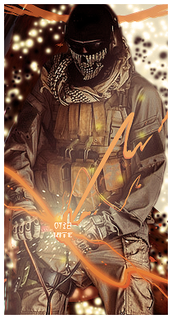Post by phrostphyre on Oct 14, 2010 19:45:34 GMT -5
The Savage Faithful
A History.
First formed forty years ago, the Savage was originally made up of native Alagaesian humans, placed into the role of heavy shock troops, supposed to be able to go into a meat grinder with no chances of living, and come out alive. However, first battles soon told different tales. The Savage Faithful suffered nearly one hundred percent casualties. The officers left alive took a look at the reasons why. The following is an excerpt from their report.
“…thus, the reason the Savage Faithful have suffered such casualties is not only lack of quality training, but the fact that it was entirely made up of Alagaesians. There are over twelve different barbarous lands from which the Kingdom could draw warriors of the highest quality; warriors inured to the weather by the savage climes of their homelands, warriors that are savage fighters, and warriors that have no cause to fight for. If the Kingdom gave them a home, food, a cause, and legal sanction allowing them to unleash the animal side that exists in all barbarians, the Kingdom would gain a fanatical fighting force, loyal only to their officers and King. Not only this, but if settled on land after completing a term of enlistment, most of these barbarian warriors are also farmers, and the Kingdom would gain more farmers, and eventually, the offspring of these barbarians can be forced into the Savage Faithful as part of a term on the contract.”
It seemed to work; the new Savage Faithful proved to be indomitable in combat. But they fought alone or as small groups, not a large formation maneuvering for advantage on a large field. This first group was made entirely up of Germani tribesmen from beyond the Beors. Soon they were completely destroyed, by one thing everyone had overlooked: Archers. Soon, however, Alban, Cymry, and Kentish longbow men soon arrived to make up the inequity. The Alagaesian officers formed them into huge formations, numbering into the three hundreds, and as long as the arrows arrived, the longbows continued to fire. The massive arrows could reach over two hundred yards, and still be able to go clean through an Urgal or man. This still posed a problem to the Kingdom’s officers, however. They had no cavalry or infantry to protect the archers.
The Savage Faithful persevered, and soon Hunnic cavalry were riding across the land, laying their lances to enemy steel to protect the longbow formations. These Huns were later reinforced by Scandian jarls, bringing with them entire households of infantry, armed with swords, huge axes, spears, and shields. The Scandians would form a shield wall, showing no exposed men, but allowing swords and axes at the front to slash and hack at the enemy, while spears in the back kept them from flanking the slow moving formation. The Huns would ride around the Scandians from both sides, and ride down the fleeing enemy. If the enemy hadn’t broken themselves on the shield wall, they fled at the sight of men with withered legs, but massive arms. (The Huns lived in the saddle, drank rain water and mare’s milk, and ate dried horse meat. They were a nomadic people. The Scandians are from across an ocean, and their land is covered in snow almost all the time.)
Thus the Savage Faithful broke free from their bloody past, and soon came to dominate any field the stepped onto. The Elves had never seen men who sounded like animals in battle, who fought like rabid wolves, and when they encountered Scandian and Alban berserkers, immune to pain, who fought until they were dead, the Elves turned to magic to combat them. The Kingdom couldn’t field the numbers of mages needed to combat the Elven magic, but somehow the Hibernian druids heeded the call. They called upon the land and trees in ways the Elves didn’t know existed: They called the spirits out of the trees and land, and bade them fight for whatever cause the druids picked. But the Elven mages were more powerful than any human magician, and this soon proved itself to the druids. But the Savage Faithful had come into itself full circle; made up entirely of barbarians from beyond the borders of the Kingdom, they soon came to win a large list of battle honors. Included are but a few.
Seige of Carvala
Kirtan
The Five Battles of the Silent Plains
The Three Battles of Isentstar Lake
A History.
First formed forty years ago, the Savage was originally made up of native Alagaesian humans, placed into the role of heavy shock troops, supposed to be able to go into a meat grinder with no chances of living, and come out alive. However, first battles soon told different tales. The Savage Faithful suffered nearly one hundred percent casualties. The officers left alive took a look at the reasons why. The following is an excerpt from their report.
“…thus, the reason the Savage Faithful have suffered such casualties is not only lack of quality training, but the fact that it was entirely made up of Alagaesians. There are over twelve different barbarous lands from which the Kingdom could draw warriors of the highest quality; warriors inured to the weather by the savage climes of their homelands, warriors that are savage fighters, and warriors that have no cause to fight for. If the Kingdom gave them a home, food, a cause, and legal sanction allowing them to unleash the animal side that exists in all barbarians, the Kingdom would gain a fanatical fighting force, loyal only to their officers and King. Not only this, but if settled on land after completing a term of enlistment, most of these barbarian warriors are also farmers, and the Kingdom would gain more farmers, and eventually, the offspring of these barbarians can be forced into the Savage Faithful as part of a term on the contract.”
It seemed to work; the new Savage Faithful proved to be indomitable in combat. But they fought alone or as small groups, not a large formation maneuvering for advantage on a large field. This first group was made entirely up of Germani tribesmen from beyond the Beors. Soon they were completely destroyed, by one thing everyone had overlooked: Archers. Soon, however, Alban, Cymry, and Kentish longbow men soon arrived to make up the inequity. The Alagaesian officers formed them into huge formations, numbering into the three hundreds, and as long as the arrows arrived, the longbows continued to fire. The massive arrows could reach over two hundred yards, and still be able to go clean through an Urgal or man. This still posed a problem to the Kingdom’s officers, however. They had no cavalry or infantry to protect the archers.
The Savage Faithful persevered, and soon Hunnic cavalry were riding across the land, laying their lances to enemy steel to protect the longbow formations. These Huns were later reinforced by Scandian jarls, bringing with them entire households of infantry, armed with swords, huge axes, spears, and shields. The Scandians would form a shield wall, showing no exposed men, but allowing swords and axes at the front to slash and hack at the enemy, while spears in the back kept them from flanking the slow moving formation. The Huns would ride around the Scandians from both sides, and ride down the fleeing enemy. If the enemy hadn’t broken themselves on the shield wall, they fled at the sight of men with withered legs, but massive arms. (The Huns lived in the saddle, drank rain water and mare’s milk, and ate dried horse meat. They were a nomadic people. The Scandians are from across an ocean, and their land is covered in snow almost all the time.)
Thus the Savage Faithful broke free from their bloody past, and soon came to dominate any field the stepped onto. The Elves had never seen men who sounded like animals in battle, who fought like rabid wolves, and when they encountered Scandian and Alban berserkers, immune to pain, who fought until they were dead, the Elves turned to magic to combat them. The Kingdom couldn’t field the numbers of mages needed to combat the Elven magic, but somehow the Hibernian druids heeded the call. They called upon the land and trees in ways the Elves didn’t know existed: They called the spirits out of the trees and land, and bade them fight for whatever cause the druids picked. But the Elven mages were more powerful than any human magician, and this soon proved itself to the druids. But the Savage Faithful had come into itself full circle; made up entirely of barbarians from beyond the borders of the Kingdom, they soon came to win a large list of battle honors. Included are but a few.
Seige of Carvala
Kirtan
The Five Battles of the Silent Plains
The Three Battles of Isentstar Lake




